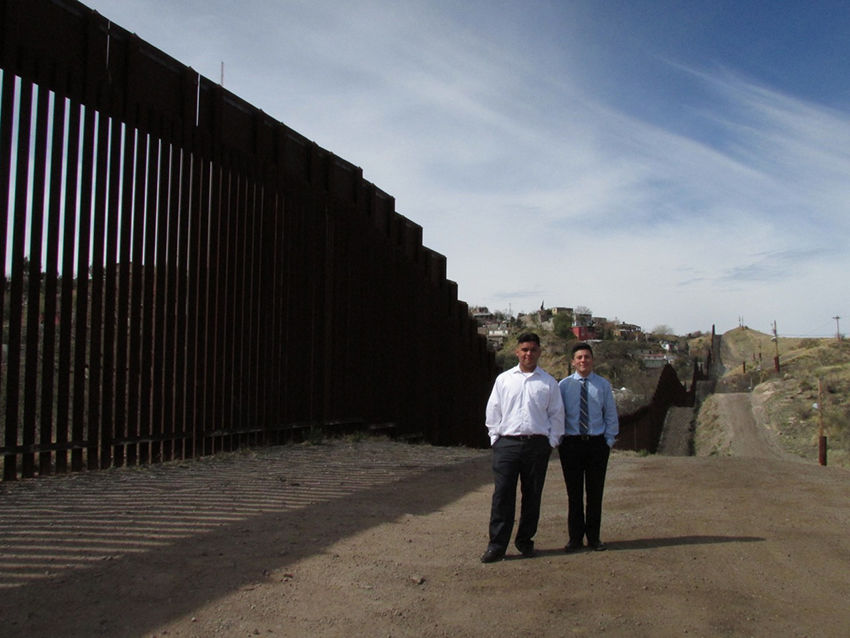Long gone are the days when catechesis meant rote memorization of prayers and theological concepts. Catechists in our post-Vatican II world are tasked to provide what scholar Richard Reichert has termed a “catechesis of discipleship” — that is, a catechesis that is relational and lived, not simply a cognitive recitation of theological precepts. Whereas we once built students of Christian doctrine, we now form disciples of Jesus.
As a classroom educator and service coordinator at Cathedral High School in Downtown Los Angeles, I witness the catechesis of discipleship firsthand. Teachers facilitate authentic prayer in our classrooms, we concretize the notion of solidarity through an annual 30-hour famine and we offer opportunities for accompaniment — one of Pope Francis’ favorite concepts — through service projects, like weekly tutoring at Dolores Mission School in Boyle Heights.
Cathedral is not unique on this front. Each Catholic school offers programs aimed at activating students’ faith beyond the cognitive. Lived experiences of Catholicism are ingrained in Catholic schools’ DNA. This deserves our attention, for the catechesis of discipleship gives Catholic education a unique role: It explicitly connects our faith in Jesus Christ with our lived reality.
Recently, I was humbled by one such catechetical experience in discipleship with my students. Six of us from Cathedral High School partnered with four from San Miguel High School in Tucson, Arizona, for an immigration immersion trip called “El Otro Lado.” We visited the existing border wall in Nogales, Arizona, toured a Border Patrol station and observed federal court proceedings for those immigrants facing deportation.
The most visceral experience came on Ash Wednesday, when we spent the day walking the migrant trails outside Arivaca, Arizona. Few experiences could have injected more realism into the Lenten reminder that “to dust you shall return” (Genesis 3:19).
We arrived at Arivaca Lake around 9:45 a.m. after picking up John Heid, a volunteer with the humanitarian group No More Deaths, who would be our guide for the day. John bore the physical marks of a Christian radical: unkempt gray hair pulled into a ponytail and a fashion sense that emphasized simplicity and functionality, as exemplified by an old jean jacket, a flannel button-down with a few minor holes and an all-purpose backpack.
John’s Christian spirit matched his appearance. He had a lifetime of stories from passing through various Catholic Worker houses. He displayed a charity of spirit that only those of us living our vocations can exude. And as we would soon discover, his work for justice for the marginalized would have pleased Jesus himself.
John led us one half-mile through the arid Sonoran landscape until he halted the group for a reflection. We were at a crossroads, John explained. We had just hiked the trail frequented by local families, and the route that curved to our right was an inconspicuous migrant trail. Just a short hike divides a family recreation area from a path offering the hope of family reunification.
A somber silence swept over our group.
We continued hiking to No More Deaths’ designated water drop. Our students wrote messages on their water jugs and left them for the unknown but not forgotten immigrants. The desert landscape combined with the simple act of leaving water to remind us of the fragility of our temporal existence.
We hiked until we reached the migrant shrine, an inlet in the canyon wall featuring a crucifix, several rosaries and a picture of a young girl. Just below it sat another water drop and several unopened cans of beans. Evidently, the stop offered both physical and spiritual sustenance.
As we began a prayer service, John explained that the young girl in the photo was Josseline. At 14, she left El Salvador in 2009 with her 10-year-old brother and a coyote. The siblings planned to reunite with their mother, herself living in Los Angeles without documentation. With less than a day of hiking left, Josseline contracted an illness and the coyote abandoned her. Tearing up, John explained that by the time search parties were able to find her, she had passed away, alone in Arizona’s Sonoran Desert.
A memorial ceremony was held where Josseline’s body was found, but her mother could not attend because of the Border Patrol checkpoint stationed along the nearby road. The tragedy of Josseline’s death, her mother’s powerlessness against America’s broken immigration system and the dire circumstances facing the immigrants who would inevitably venture upon the shrine where we sat — it all weighed on our students. For the second time in an hour, they absorbed the silence where God is so often found.
No course work or textbook could inspire such respect for human dignity, conjure as much passion for Christ’s justice or similarly drive home the need for solidarity with the marginalized. Students needed no further study to hear God’s call to discipleship from their catechesis on “El Otro Lado.”
Michael Jezewak, a 2016 Loyola Marymount University PLACE Corps graduate, is a teacher and service coordinator at Cathedral High School in Downtown Los Angeles.

